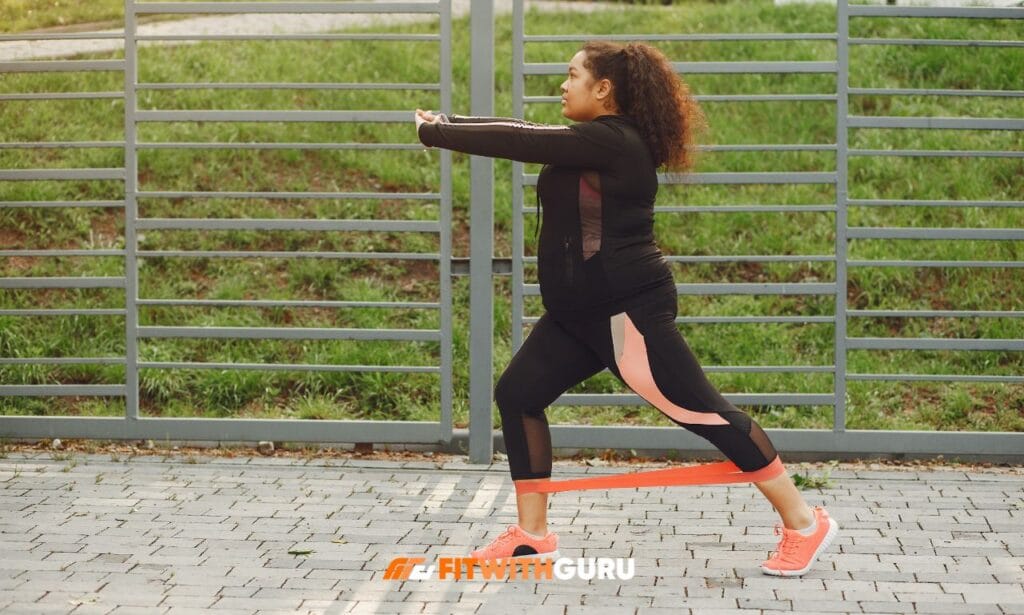Does running burn belly fat? This question haunts millions of fitness enthusiasts who lace up their running shoes, hoping to target that stubborn midsection. The short answer is yes, but the complete picture is more nuanced than a simple yes or no.
Running is one of the most effective cardiovascular exercises for overall fat loss, including belly fat, but understanding how it works can make the difference between seeing results and spinning your wheels.
The Science Behind Fat Burning and Running
When you hit the pavement for a run, your body becomes a fat-burning machine through a process called lipolysis. During aerobic exercise like running, your body breaks down stored fat cells and converts them into energy. The key factor here is creating a caloric deficit – burning more calories than you consume.
Running typically burns between 300 and 600 calories per hour, depending on your weight, pace, and terrain. However, your body doesn’t selectively burn fat from specific areas, a concept known as “spot reduction.”
Instead, fat loss occurs throughout your entire body, with genetics determining where you lose fat first and last. For many people, belly fat is often the last to go because it serves as your body’s primary energy reserve.
Does Running Burn Belly Fat Fast?
The speed at which running burns belly fat depends on several critical factors. Your current body composition, running intensity, frequency, and diet all play crucial roles in determining how quickly you’ll see results.
High-intensity interval training (HIIT) running has shown auspicious results for accelerating belly fat loss.A study published in the Journal of Obesity found that participants who performed HIIT workouts lost significantly more abdominal fat compared to those doing steady-state cardio.
Here’s what affects fat-burning speed:
- Running frequency: 4-5 times per week yields better results than sporadic sessions
- Duration: Longer runs (45+ minutes) tap into fat stores more effectively
- Intensity: Mixing high and moderate intensity maximizes fat oxidation
- Consistency: Regular running for 8-12 weeks typically shows noticeable belly fat reduction
The Role of Running Intensity
Different running intensities target fat burning in unique ways. Zone 2 training (conversational pace) primarily burns fat as fuel, while higher intensities create an “afterburn effect” called EPOC (Excess Post-Exercise Oxygen Consumption). This means your body continues burning calories at an elevated rate for hours after your run.
Running and Love Handles: Targeting Side Fat
Does running effectively burn belly fat and love handles? Love handles, the fat deposits on your sides, respond to the same principles as belly fat – overall caloric deficit through consistent running. However, love handles can be particularly stubborn because they’re often the result of both subcutaneous fat (under the skin) and lifestyle factors.

Running helps address love handles through:
- Improved insulin sensitivity: Better blood sugar control reduces fat storage
- Enhanced core engagement: Running naturally activates core muscles
- Stress hormone regulation: Lower cortisol levels reduce abdominal fat accumulation
To maximize love handle reduction, combine running with targeted core strengthening exercises. Planks, Russian twists, and side planks performed after your runs can help tighten the underlying muscle structure.
Gender Differences: Men vs. Women
Does Running Burn Belly Fat for Men?
Men typically see faster belly fat reduction from running due to several physiological advantages. Higher testosterone levels and greater muscle mass mean men burn calories more efficiently during and after exercise.
Men also tend to store fat primarily in the abdominal area, making it more responsive to cardiovascular exercise like running. The average man can expect to see noticeable belly fat reduction within 6-8 weeks of consistent running, provided diet is managed correctly.
Does Running Burn Belly Fat in Females?
Women face unique challenges when it comes to burning belly fat through running. Hormonal fluctuations, particularly estrogen and progesterone, affect fat storage patterns and metabolism.
Women naturally store more fat in the hips and thighs, with belly fat often being more resistant to exercise. However, this doesn’t mean running is ineffective for women – it simply requires more patience and consistency.
Female runners should focus on:
- Longer, steady-state runs: Building aerobic base for efficient fat burning
- Strength training integration: Preserving muscle mass during fat loss
- Hormonal considerations: Adjusting training around menstrual cycle phases
- Adequate recovery: Preventing cortisol elevation that promotes belly fat storage
The Limitations of Running Alone
Does running alone burn belly fat? While running is highly effective, relying solely on running without addressing other factors limits your results. Running creates the caloric deficit necessary for fat loss, but several elements determine how effectively you burn belly fat:
Dietary Considerations
You cannot outrun a poor diet. Even marathon runners struggle with belly fat if their nutrition isn’t dialed in. Running may burn 400 calories, but a single fast-food meal can easily exceed 1,200 calories.
Focus on:
- Protein intake: 0.8-1 gram per pound of body weight to preserve muscle
- Whole foods: Minimize processed foods that promote inflammation
- Timing: Eat within 30 minutes post-run to optimize recovery
- Hydration: Proper fluid balance supports fat metabolism
Sleep and Recovery
Hormones that control hunger and fat accumulation are disturbed by inadequate sleep. I’m for 7-9 hours of quality sleep to optimize your running performance and fat-burning potential.
Stress Management
Chronic stress elevates cortisol, which promotes belly fat accumulation even when you’re running regularly. Incorporate stress-reduction techniques like meditation or yoga alongside your running routine.
Optimal Running Strategies for Belly Fat Loss
To maximize belly fat burning through running, implement these evidence-based strategies:
Progressive Training Plan
| Week | Frequency | Duration | Intensity |
| 1-2 | 3 times | 20-25 min | Easy pace |
| 3-4 | 4 times | 25-30 min | Mix easy/moderate |
| 5-8 | 4-5 times | 30-45 min | Include 1 HIIT session |
| 9+ | 5 times | 45+ min | 2 HIIT, three steady-state |
HIIT Running Workout Example
- 5-minute warm-up jog
- 8 rounds of: 30 seconds all-out sprint, 90 seconds recovery jog
- 5-minute cool-down walk
This type of workout maximizes the afterburn effect and accelerates belly fat loss.

Long Steady-State Runs
Once weekly, perform a longer run at a conversational pace. These runs improve your body’s ability to burn fat as fuel and build the aerobic base necessary for sustained fat loss.
Measuring Progress Beyond the Scale
Belly fat reduction isn’t always immediately visible on the scale because you’re simultaneously building lean muscle.
Track your progress through:
- Waist circumference: Measure at the narrowest point weekly
- Body fat percentage: Use DEXA scans or bioelectrical impedance
- Progress photos: Take consistent images in the same lighting and pose
- How clothes fit: Often, the most practical indicator of belly fat loss
- Energy levels: Improved fitness indicates positive body composition changes
Common Mistakes That Sabotage Results
Many runners unknowingly sabotage their belly fat loss efforts through these common mistakes:
Overcompensating with Food
Running increases appetite, leading many to consume more calories than they burn. Keep a food diary to ensure you’re maintaining a caloric deficit.
Neglecting Strength Training
Running alone can lead to muscle loss, which reduces your metabolic rate. Incorporate 2-3 strength training sessions per week to preserve lean muscle mass.
Inconsistent Training
Sporadic running efforts won’t create the sustained caloric deficit needed for belly fat loss. Consistency trumps intensity when it comes to long-term results.
Ignoring Recovery
Overtraining elevates stress hormones that promote fat storage. Include rest days and easy runs in your training schedule.
FAQs
How long does it take to see belly fat loss from running?
Most people notice initial changes in 4-6 weeks of consistent running, with significant belly fat reduction visible after 8-12 weeks. Results vary based on starting body composition, diet, and training consistency. Individual genetics also play a role in how quickly you lose fat from your midsection.
Is morning or evening running better for burning belly fat?
The timing of your run has minimal impact on fat burning – consistency matters more than timing. However, morning runs on an empty stomach may slightly enhance fat oxidation since glycogen stores are depleted overnight. Choose a time you can stick to consistently rather than obsessing over optimal timing.
How many miles should I run daily to lose belly fat?
Quality matters more than quantity when it comes to running for fat loss. 3-5 miles of varied-intensity running 4-5 times per week is more effective than daily long, slow runs. Focus on creating a sustainable routine that includes both easy runs and higher-intensity sessions.
Can I lose belly fat by running on a treadmill?
Treadmill running is equally effective as outdoor running for burning belly fat. The key is maintaining consistency and challenging yourself with incline and speed variations. Many people find treadmill running easier to maintain year-round, leading to better long-term results.
Should I run before or after strength training for maximum belly fat loss?
For optimal fat loss, perform strength training before running when possible. This approach depletes glycogen stores, forcing your body to rely more heavily on fat for fuel during your run. If you must choose one, prioritize the exercise you can perform most consistently.
Conclusion
Does running burn belly fat? Absolutely, but it’s most effective when combined with proper nutrition, adequate recovery, and realistic expectations. Running creates the caloric deficit necessary for fat loss while improving cardiovascular health and building mental resilience. The key to success lies in consistency, progressive training, and patience with the process.
Remember that belly fat loss is a marathon, not a sprint – those who commit to long-term lifestyle changes see the most dramatic and lasting results. Whether you’re a man or woman, beginner or experienced runner, the principles remain the same: create a sustainable caloric deficit through running and proper nutrition, and your body will respond by burning fat, including stubborn belly fat.
Start with a manageable running routine, focus on gradual progression, and trust the process. Your future self will thank you for taking that first step out the door.

